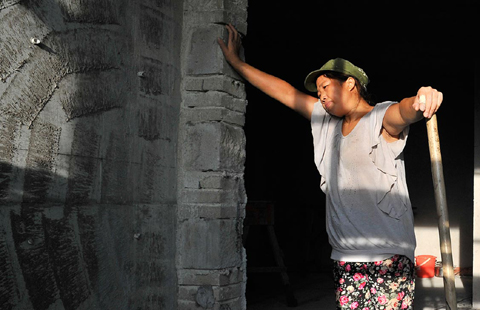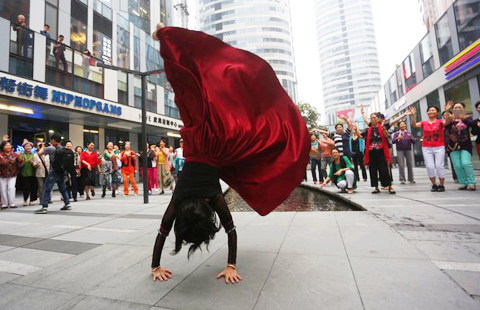Putting Chinese wines on the map
Updated: 2014-10-06 11:08
By Cui Jia in Beijing, Wang Huazhong in Ningxia, Zhao Ruixue in Shandong, Zhang Yu in Hebei and Cheng Hong in Shanxi(China Daily)
|
|||||||||||
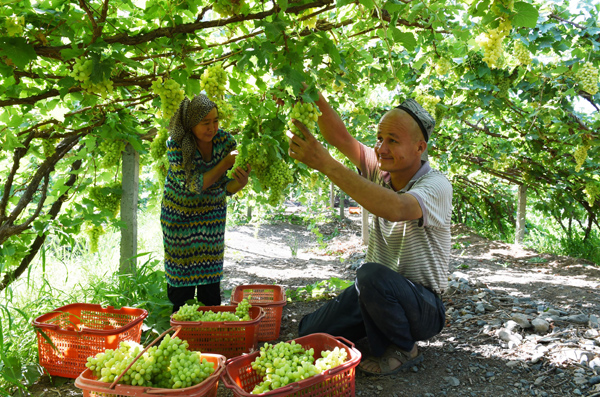 |
|
Farmers at a village in Turpan, the Xinjiang Uygur autonomous region, pick grapes in July. Turpan is one of China's main grape-producing regions. Liu Jian / For China Daily |
According to Cao Kailong, the director of the Ningxia Grape and Flower Industries Development Bureau, the region will be harvesting more than 70,000 hectares of grapes by 2020.
"There are already 100 established wineries, and another 100 wineries have completed or are now going through the registration process," said Cao.
"The region's strategy is to develop small wineries but a big industry, going global with international standards and fostering local brands."
Cao said most of the 2,000 wineries that are expected to be operating by 2020 will have small-scale production levels of 150,000 to 200,000 bottles per year.
"It's like calligraphy. Everyone has his own style. We help wineries to become special and develop their own characters that can compete with top international brands."
Leading international players such as Pernod Ricard and Domaine Chandon are among those growing grapes and making wines in a region that "warmly welcomes" foreign investors.
Shen Yang, estate director of Domaine Chandon's Ningxia operation, said the debut of the wines in September was a great success. The company is redesigning the label and from the second batch onwards it will include the words "Made in Helan Mountain East Valley" in Chinese and English.
"We want Chinese consumers to be proud of products made in China," said Shen. "The origin label will promote our Chandon brand too. We are proud to tell everyone that the wine is from Helan Mountain."
Domestic investors
As well as international producers, investors from China have also shown great interest in the industry.
In Shanxi province, many people whose wealth came from the coal industry have ditched their old businesses and set their sights on opening wineries. Zhang Wenquan, president of Chateau Rongzi, is one of them.
He has found there are many advantages for energy enterprises that shift to wine since he established the chateau in 2007.
"The capital accumulated in the energy industry to some extent ensures the high quality of facilities, which paves the way for the use of advanced technology in the winemaking process, and therefore fine wine can be produced," he said. "It is also environmentally friendly and can benefit local farmers."
The provincial government has introduced policies aimed at changing the industrial landscape, which is based mainly on coal mining, to boost the economy in an environmentally friendly way. This has encouraged a growing number of coal companies to invest in vineyards.
Shanxi belongs to one of China's emerging wine-producing regions - the Loess Plateau. At around 800 to 1,200 meters above sea level with a continental climate, the main wine-producing areas in the province lie on roughly the same latitudes as Bordeaux.
Low rainfall, high levels of sunshine, a temperature difference of 15 C between day and night and sandy soil all contribute to the quality of the grapes.
"In good years, this region could produce the finest wine in China," Duan said.
To guarantee the quality of the wines, Rongzi uses Italian and French pressing machines and bottling equipment.
Nevertheless, the Chinese still predominately prefer to consume traditional alcoholic drinks rather than wine. Baijiu, a white spirit, is often served during formal occasions and traditional festivals.
Wang Qingwei, general manager of Chateau Rongzi, said: "With low alcohol by volume, wine will be a better choice for many people at business events where drinking almost cannot be avoided.
"We can encourage customers to change their drinking habits and adopt a healthier way of consuming alcohol, and this will help wine to gain popularity."
Sales in China dropped sharply in the first half of this year as a result of the central government's campaign to ban officials' lavish lifestyles, Duan said.
"Wine is still seen as a luxury product rather than a daily consumption item in China. In the past, some people did not appreciate the value of wine," he said.
"They bought expensive wines just to impress or even bribe officials. Now those buyers are gone, but this is a good thing, as now the wine market can begin to develop in a healthier way."
Tourist attraction
Wineries have positioned themselves as local tourist attractions to promote the wine culture and boost sales.
Zhang Hanzhe, a 17-year-old senior middle school student, was impressed with the Changyu Wine Culture Museum in Shandong province, a traditional winemaking area. He visited the museum during his summer vacation in August.
"I had never thought that China has such a wonderful history of winemaking," he said. "Before, I tended to only link wine with European countries.
"It was a great experience to learn about the whole production process in the museum. I also learned a lot about how to appreciate wine."
Zhang bought a bottle with a label printed with a photo of his family as a gift for his mother.
"She will love this personalized gift very much," he said.
Located in Yantai, the museum was established in 1992 at the former site of Changyu, China's first industrialized wine manufacturer.
It has become a popular tourist destination, and visitors can see the cellar, taste premium wines and have wine appreciation lessons. Hong Yuyan, a manager of the Changyu Tourism Company, said around 300,000 tourists visit the museum every year.
Nestled between the blue waters of Bohai Bay and the sprawling mountain ranges along Shandong's northern coast, Yantai is the only city in Asia to be honored as an International Grape and Wine City by the International Organization of Vine and Wine.
It is said that Zhang Bishi, an overseas Chinese businessman in Southeast Asia, selected Yantai to build the Changyu winery in 1892 because he heard about the coastal city from French friends, who said the city's climate and sunshine were ideal for making wine.
The city produced 14.85 million liters of wine in the first half of this year, accounting for 29.2 percent of the country's total production during the first six months, according to the Yantai Grape and Wine Bureau.
Yi Fenghuang, the head of the bureau, says 152 winemakers are planning operations in Yantai, including heavyweights Changyu, Junding, Great Wall and Grand Dragon.
Around 50 chateaus have been built in Yantai as the industry has developed. They have boosted wine tourism, which helps people to understand wine.
Visitors to chateaus in Yantai can tour vineyards and check out the cellar stores and workshops. At Chateau Changyu Castel, tourists can participate in picking grapes during the harvest season and make wines themselves.
Lin Chengcai, office director of the Yantai Grape and Wine Bureau, said a million tourists visit the city's chateaus every year.
Contact the writers at cuijia@chinadaily.com.cn
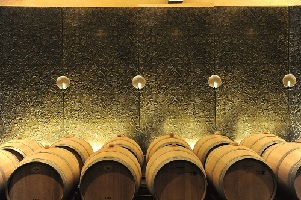 |
 |
| Raising a glass to China's new found enthusiasm for wine | Wine worth of $4b lost in Calif earthquake |
Today's Top News
Barrage of deals expected on Europe trip
First US Ebola patient dies
Sino-Portuguese relations make 'giant leap' forward
Holiday spending habits change
Book of Chinese president debuts at Frankfurt fair
China's 'Nightingale' races for Oscar
Britain to deploy 750 servicemen in West Africa to tackle Ebola
Hopes high for Premier Li's visit to Germany
Hot Topics
Lunar probe , China growth forecasts, Emission rules get tougher, China seen through 'colored lens', International board,
Editor's Picks

|
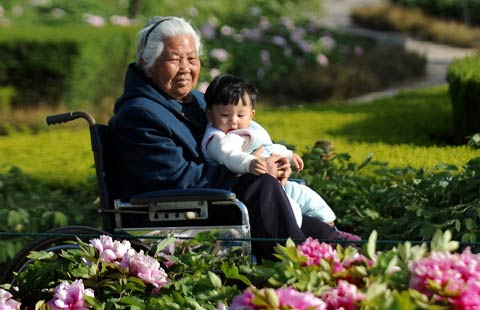
|

|

|

|
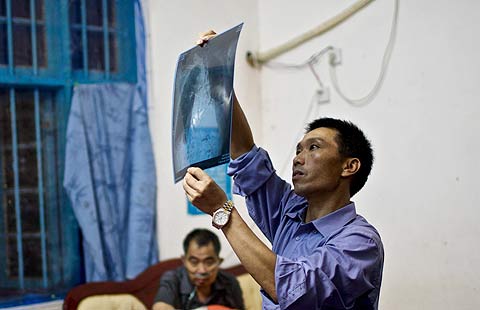
|


